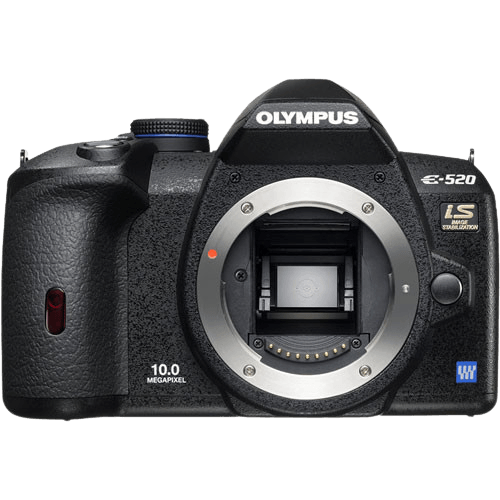Olympus E520 Specs and Scores

The Olympus E520 earns a score of 41/100 for its general specifications. Launched in 2008 at a price of $450, the camera’s dimensions measure 136 x 92 x 68mm, and it weighs 552g or 1.22lbs. As a DSLR camera from over a decade ago, its specifications may not impress in today’s market. However, the Olympus E520 remains a reliable option for those seeking an affordable, user-friendly camera.
Olympus E520 Overview and Optics
The Olympus E520’s optics score is 41 out of 100. This camera features a 10-megapixel Live MOS sensor, a TruePic III processor, and a Micro Four Thirds lens mount. With a 3.5 shooting speed and an image stabilization system, the E520 is equipped to handle various shooting scenarios. Additionally, the camera’s aspect ratio is 4:3, and it has a DXOMARK sensor score of 55.
In today’s market, the Olympus E520 struggles to compete with newer cameras offering higher megapixel counts, faster shooting speeds, and better sensor technology. While it may have been a solid choice when it was first released, advancements in camera technology have left the E520 trailing behind.
Considering the Olympus E520’s specifications and its optics score, it is clear that this camera is not on par with modern options. Although it has some useful features, the E520 is overshadowed by more advanced competitors.
Olympus E520 Video Performance
The Olympus E520 lacks video capabilities. This camera focuses solely on photography without offering any video functions. Users seeking video features must consider other camera models.
Olympus E520 Features and Benefits
The Olympus E520 scores 34/100 in the features category. This score reflects the camera’s limited capabilities when compared to modern cameras. The E520 has a 2.7-inch screen with a resolution of 230,000 dots, but it lacks a touchscreen, flip screen, GPS, WiFi, and Bluetooth.
In today’s market, these specifications are inadequate, as most cameras now offer larger screens, higher resolutions, and advanced connectivity options. The absence of a touchscreen and flip screen can hinder the user experience, while the lack of GPS, WiFi, and Bluetooth makes sharing and geotagging photos more time-consuming.
Considering these limitations, the Olympus E520 falls short in the features department compared to current camera offerings. Although it may have been a satisfactory option in the past, it now struggles to compete with the advanced features found in contemporary cameras.
Olympus E520 Storage and Battery
The Olympus E520 earns a storage and battery score of 65/100. This camera offers two memory card slots, compatible with Compact Flash (Type I or II) and xD Picture Card formats. Although these memory card types are less common in today’s market, they provide adequate storage options for photographers.
The E520’s battery life is impressive, lasting for 650 shots on a single charge. The camera uses a BLM-2 battery type, which is a reliable power source. However, it lacks USB charging capabilities, which could be a drawback for users who prefer more convenient charging options.
Taking these factors into account, the Olympus E520’s storage and battery capabilities are satisfactory for most photography needs but may not be ideal for those seeking more advanced options or convenience in charging.
